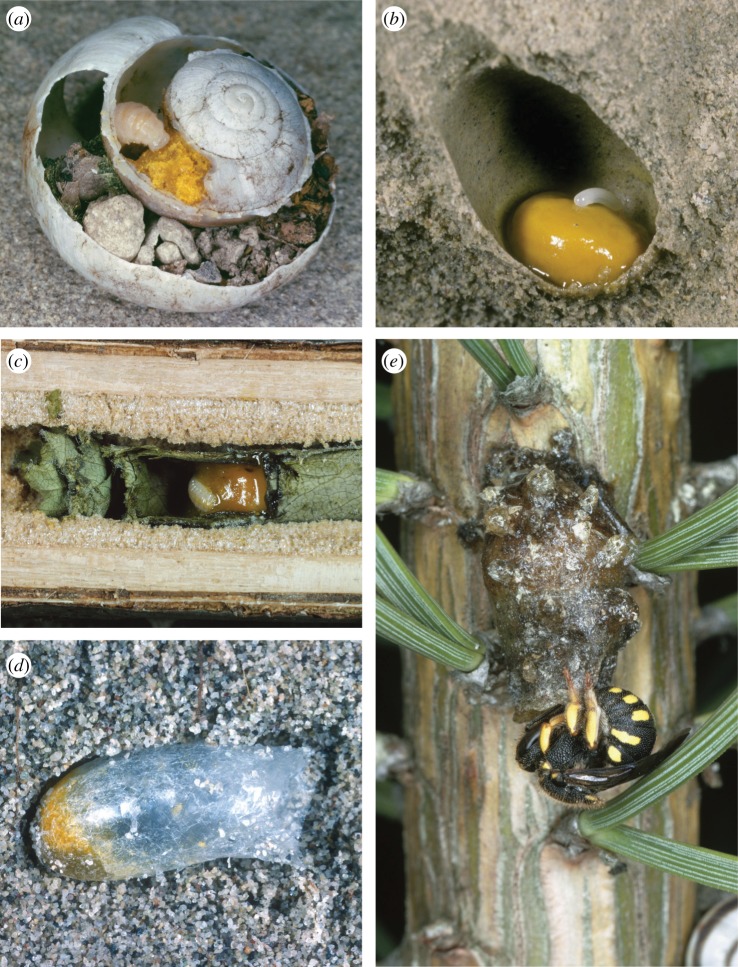Figure 1.
Bee nests are diverse in form. (a) Cross-section of the snail shell nest of Osmia bicolor, showing the yellow pollen mass in the innermost whorl of the shell, a single larva developing on the pollen and a nest plug of pebbles and other debris. (b) Cross-section of the nest of Andrena vaga, excavated in sand. Shown are the round yellow pollen mass and the egg of A. vaga deposited on top. (c) Cross-section of the nest of Megachile alpicola, built in a hollow plant stem. The nest is built from multiple layers of leaves cut from plants. The yellow-brown pollen mass is visible at the right end of the cell, upon which a single larva is seen. (d) Excavated nest cell of Colletes cunicularius. This nest cell, built in the sand, is lined with secretions produced by the Dufour's gland of the nesting female. When these secretions dry, they form a thin, cellophane-like layer that waterproofs the cell. The pollen mass, visible through the lining, is seen to the left of the photo. (e) Anthidiellum strigatum, finalizing a nest built from plant resin. All photos: Entomologie/Botanik, ETH Zürich/Albert Krebs.

